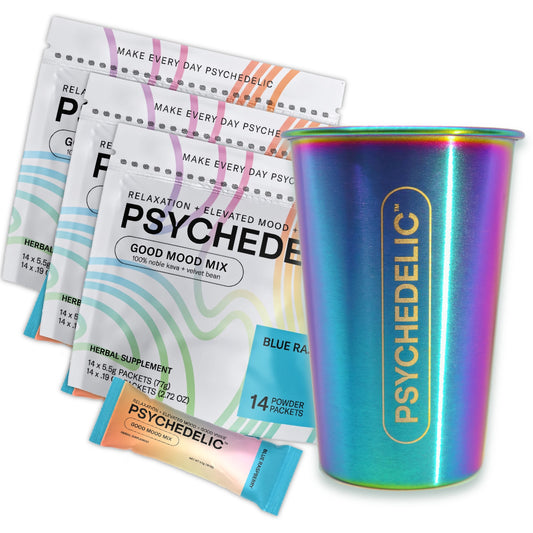All About Psychotomimetic Substances: Their Function in Psychological Research
Psychotomimetic compounds, such as LSD and psilocybin, have actually gathered boosting passion in emotional research for their capability to reproduce psychotic symptoms and supply understanding into different psychological health problems. Their interactions within the brain, especially via serotonin and dopamine pathways, suggest a complicated partnership between consciousness and neurobiology that may open unique therapeutic opportunities. As scientists remain to investigate their prospective applications, moral considerations surrounding their use in professional settings come to be paramount, raising essential questions regarding safety and security and informed permission that necessitate further exploration.
Interpretation of Psychotomimetic Compounds
In the realm of mental study, psychotomimetic compounds are substances that can induce impacts appearing like those of psychosis, such as hallucinations, deceptions, and transformed understandings of fact - About Golden Psycho. These substances can be classified into different classifications, including hallucinogens, dissociatives, and certain stimulants, each producing distinct psychological effects
The pharmacological activity of psychotomimetic substances usually entails inflection of neurotransmitter systems, particularly those related to serotonin, dopamine, and glutamate. For instance, compounds like lysergic acid diethylamide (LSD) primarily act upon serotonin receptors, resulting in extensive modifications in sensory understanding and cognition.
The energy of psychotomimetics in research study depends on their capacity to simulate psychotic signs and symptoms, supplying a model for recognizing the hidden mechanisms of psychotic disorders such as schizophrenia. By studying the effects of these substances, researchers can obtain insights into the neurobiological and emotional processes that add to psychosis.
Moreover, psychotomimetic substances have actually been explored for their therapeutic possibility in dealing with numerous psychological wellness problems, consisting of clinical depression and anxiousness, highlighting their dual role in both research study and prospective scientific applications.
Historic Growth and Context
The expedition of psychotomimetic compounds has an abundant historic context that dates back to ancient civilizations, where substances such as psilocybin mushrooms and peyote were utilized in spiritual and recovery techniques. These very early uses usually intertwined with religious routines, suggesting a profound reverence for the transformed states of awareness caused by these substances.
The mid-20th century marked a substantial juncture in the research study of psychotomimetic compounds, particularly with the synthesis of LSD by Albert Hofmann in 1938. The subsequent popularization of LSD in the 1960s catalyzed a wave of interest in both its mental results and possible therapeutic applications. Researchers began to examine exactly how these materials might imitate psychotic states, giving insights right into mental disorder.
Nonetheless, the enhancing association of psychotomimetics with counterculture movements caused regulative backlash, culminating in the criminalization of most of these substances. Regardless of these obstacles, the resurgence of passion in the healing possibility of psychedelics in the 21st century has motivated restored research study. This historic trajectory underscores the advancing understanding of psychotomimetic compounds, transforming from sacred materials to subjects of scientific questions and, possibly, healing guarantee.
Devices of Activity
Comprehending the devices of action of psychotomimetic compounds reveals the intricate means these materials engage with the brain's neurochemistry. These substances primarily apply their results through inflection of natural chemical systems, specifically serotonin, dopamine, and glutamate. For example, several classic psychedelics, such as psilocybin and LSD, mainly serve as agonists at serotonin 5-HT2A receptors, bring about altered assumption and cognition. This communication not only impacts sensory processing however also enhances psychological and reflective experiences.
Along with serotonin, dopaminergic paths are significantly affected by compounds like mescaline and certain cannabinoids, which can cause transformed states of consciousness and modifications in state of mind and motivation. The NMDA receptor incongruity observed with materials like ketamine highlights one more pathway with which psychotomimetics might induce dissociative states and profound alterations in assumed procedures.
The neurochemical cascades launched by these communications cause complex and multifaceted emotional impacts. Comprehending these systems is critical for both the innovation of psychological research study and the healing capacity of psychotomimetic compounds, as they offer browse around this web-site understandings right into the underlying neural correlates of transformed states of awareness.
Current Study and Applications
Current investigations into psychotomimetic compounds have revealed a renewal of passion in their restorative applications, especially in the fields of psychiatry and psychology. Scientists have actually started exploring substances such as psilocybin, LSD, and ayahuasca for their prospective to ease symptoms connected with numerous mental wellness problems, including anxiety, anxiety, and PTSD.
Medical tests have shown that, when administered in regulated settings, these substances can facilitate extensive mental experiences, promoting psychological innovations and enhanced healing outcomes. Researches have actually revealed that psilocybin-assisted treatment can lead to substantial decreases in treatment-resistant anxiety, with impacts lasting for several months post-treatment.
Furthermore, psychotomimetic compounds are being reviewed for their capability to cultivate neuroplasticity, possibly enabling more efficient rewiring of maladaptive idea patterns. These searchings for recommend that such substances might work as adjuncts to standard psychotherapeutic techniques, improving the efficiency of restorative treatments.
As research advances, the focus is shifting in the direction of comprehending the optimum does, healing setups, and individual attributes that can maximize the benefits of these compounds. This expanding field holds pledge for reinventing psychological health and wellness therapy paradigms and resolving the restrictions of traditional psychological drugs.
Honest Considerations in Research

Browsing the honest landscape of research entailing psychotomimetic compounds is essential to making sure participant safety and security and the honesty of study outcomes. Scientists should focus on informed permission, guaranteeing that participants totally understand the possible risks and advantages related to the materials being researched. This consists of supplying thorough info concerning possible emotional impacts, including acute and lasting effects, and enabling participants the opportunity to withdraw from the research study any time without fine.
In addition, honest oversight by institutional review boards (IRBs) is essential. IRBs review study procedures to protect participant well-being and copyright moral criteria. This examination assists alleviate dangers find out and ensures that researches are carried out with scientific rigor. Furthermore, the potential for threat have to be meticulously examined, especially when prone populations are involved.
Confidentiality is another vital consideration. Scientists should implement robust measures to shield individuals' identities and information, particularly provided the delicate nature of experiences linked with psychotomimetic substances (About Golden Psycho). Ultimately, a commitment to ethical techniques not just promotes trust fund look at more info in between scientists and participants but additionally improves the reputation and credibility of the research study end results, adding to the advancement of emotional understanding

Final Thought
To conclude, psychotomimetic compounds, specifically timeless psychedelics such as LSD and psilocybin, offer considerable understandings into emotional problems through their one-of-a-kind mechanisms of action. Their restorative possibility in resolving problems like anxiousness and PTSD highlights the importance of continued research in this area. Nevertheless, making sure moral standards in study practices is critical for participant safety and security and educated permission, permitting a responsible expedition of these substances' benefits and ramifications within psychological scientific research.